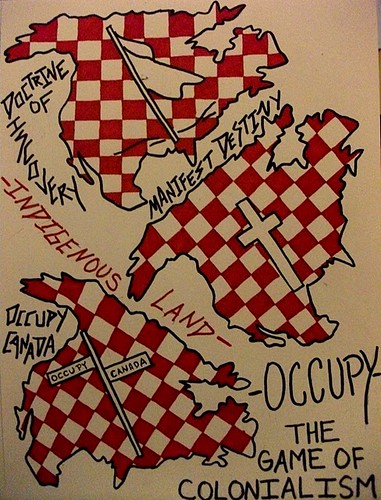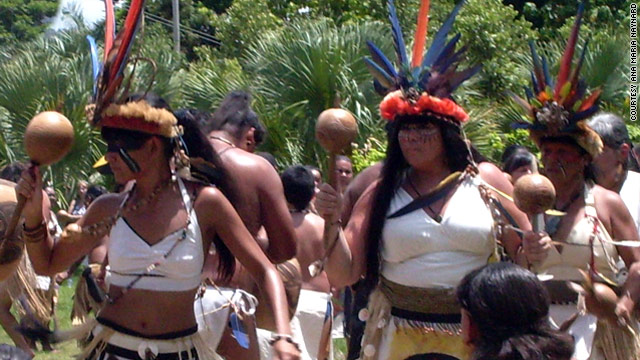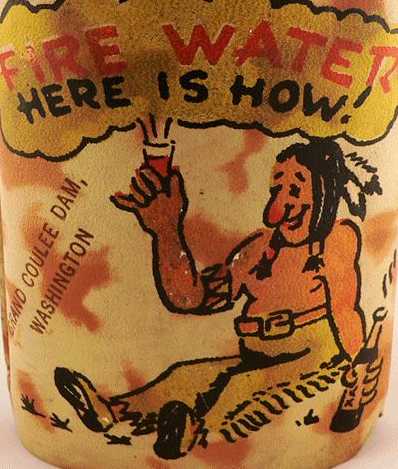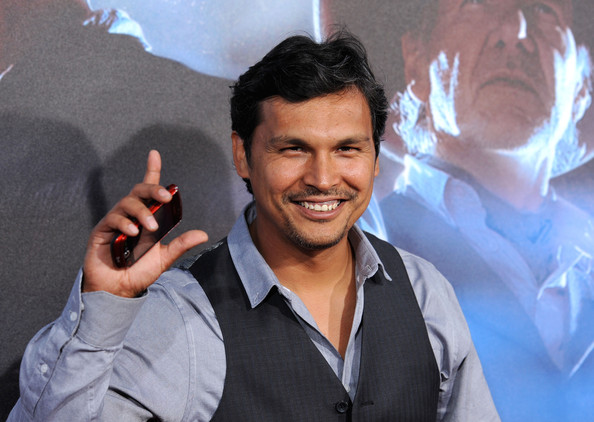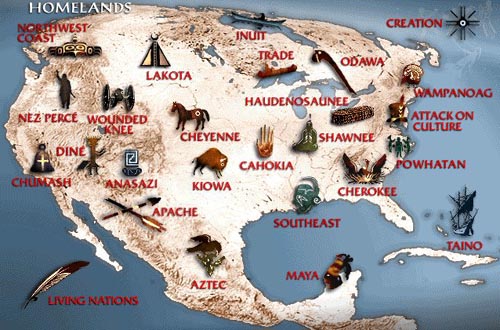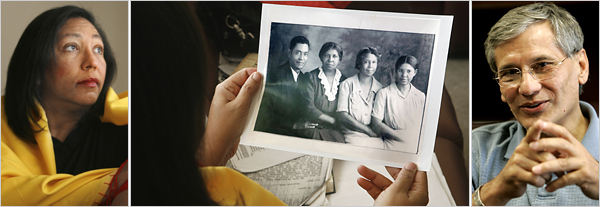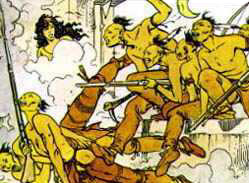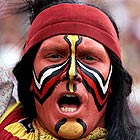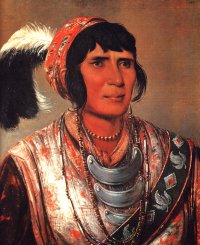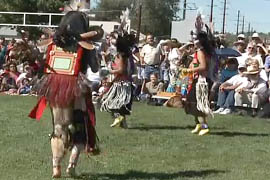US students spark racism row with bake saleA California students' group has sparked a racism and sexism row over plans for a bake sale in which people are charged according to their ethnic background and gender.
Campus Republicans at the University of California, Berkeley say critics have overreacted to their event planned for this week, which they insist is a protest over affirmative action.
The group's Facebook page lists the price of baked goods at the sale according to race: $2 for whites, $1.50 for Asians, $1 for Hispanics, $0.75 for blacks and $0.25 for Native Americans.
"$0.25 FOR ALL WOMEN!" it added.
Campus Republican President Shawn Lewis said the idea of the "Increase Diversity Bake Sale" was to highlight a legislative bill to let California public universities consider race and gender in their admissions process.
He said they planned to go ahead with the sale on Tuesday despite protests and threats. "We didn't expect the volume, the amount of response that we got," he told CNN.'Racist' bake sale at UC draws angry protestBy Nanette AsimovNone other than former UC Regent and affirmative-action opponent Ward Connerly showed up at Sproul Plaza to help campus Republicans sell frosted cupcakes priced according to the race of the buyer--a stunt intended to mock legislation before the governor that would allow universities to consider race and ethnicity in admissions decisions.
"The point is, the people of California have said we don't want to see race and color in admissions," Connerly told angry students and faculty who crowded around the table.
"Go to hell!" yelled Ann Callegari, an African American student. "Are you the overseer?"
Connerly, a multiracial Republican who wrote Proposition 209, the state's voter-approved ban on race preferences in government programs, replied that he had plenty of experience with real racism growing up in Louisiana.
Many students denounced the group's bake sale as racist, and student government leaders unanimously approved a resolution condemning discrimination "in satire or seriousness" in response to the event. UC Berkeley Chancellor Robert Birgeneau and two vice chancellors sent out a campus-wide letter strongly supporting that position, while acknowledging that the administration "can urge, but not mandate, a person to behave with civility."'Racist' bake sale at UC Berkeley ignites furorASUC president Vishalli Loomba told reporters that the pay structure and the ranking of races "trivialize the struggles that people have been through and their histories."
The debate reached beyond campus when it was picked up by social media and news organizations.
Commentators from some outlets, such as Fox News, came to the bake sale group's defence, citing their right to offend and speak out against affirmative action.
Critics called the protest 'half-baked' in that it oversimplifies compelling and complex arguments for promoting diversity and remedying past discrimination.
"We're really hurt by what they did," Anais LaVoie, president of the Cal Berkeley Democrats, told CNN.
"The way that they made the statement, the words that they used, the fact that they humourized and mocked the struggles of people of colour on this campus is very disgusting to me." ReactionsControversy erupts over Campus Republicans bake sale plansTim Wise, author of the book "White Like Me: Reflections on Race from a Privileged Son," calls the bake sale a "sarcastic and rather smarmy slap at people of color."
ReactionsControversy erupts over Campus Republicans bake sale plansTim Wise, author of the book "White Like Me: Reflections on Race from a Privileged Son," calls the bake sale a "sarcastic and rather smarmy slap at people of color."
"There are a lot of ways to make a point about your disagreement with affirmative action," Wise told Lemon Saturday night.
"I get the joke," he continued. "How very original. It's been done for 15 years. The point that I think needs to be made ... is that by the time anyone steps on a college campus ... there has already been 12 to 13 years of institutionalized affirmative action for white folks, that is to say, racially embedded inequality, which has benefited those of us who are white. And it's only at the point of college admissions that these folks seem to get concerned with color consciousness."Native blogger Adair Hill adds:
Bake Sale Gives Native Women Free Stuff!The Berkeley College Republicans are hosting a "Pay-by-race" Bake Sale! How very creative! AND AND AND they're calling it the "Increase Diversity Bake Sale"!!!! No, really, this real. Really. It is supposed to be a protest of some affirmative action legislation in California. The bake sale will be held tomorrow and will charge white men $2, Asian men $1.50, Latino men $1, black men $0.75 and Native American men $0.25. All women will get $0.25 off those prices. You know what that means? It means Native women eat free, suckas!!! It's just like real life, all I have to do is walk up to any establishment and show them my Indian card and I get free food to go with my free education, my free health care, my free exemption from all taxes, and my millions of dollars in casino money! It is so AWESOME to be a Native woman in this country, lemme tell you!As does Adrienne Keene:
Cal's "Affirmative Action Bake Sale": I want my free cookies [W]hat about those girls in the picture above wearing headdresses? They decided to be "cute" and pretend to be Native American women and get free cookies.
[W]hat about those girls in the picture above wearing headdresses? They decided to be "cute" and pretend to be Native American women and get free cookies.
You can hear from them in their own words at this video here. But the gist of what they say is:"This bake sale trivializes the issue of affirmative action, so we thought to show our opinion of the bake sale, we would trivialize their opinion."Um, that doesn't even make sense. At all. In the words of my friend Kayla (a Native UC Berkeley student):Even if anti-bake sale, [this] makes no sense to me, since the next logical step ought to have been "maybe we ought not to trivialize Native American (women) with stereotypical headdresses."Rob weighs inI haven't heard anything about women getting affirmative action in college admissions. Sounds like these College Republicans are anti-women (shocking, I know).
I don't mind the concept of using race or satire to criticize racism. And I think some of the critics' arguments--that this trivializes or "humourizes" a serious issue--are weak.
As with most race-based satires, though, this stunt misses the mark. Tim Wise nailed the problem with it: It isn't even remotely similar to the real-world situation.
Let's suppose affirmation action did more than just "consider" race as an admissions factor. Let's suppose people got guaranteed "discounts" for belonging to a certain minority. It wouldn't be anything like 50% off for Latinos, 62.5% off for blacks, and 87.5% off for Natives. It would be more like five or ten cents off the $2.00 admission "price."
And that ignores the whole point of affirmation action, which is to compensate for the past effects of racism. Let's take a typical Native case. Your great-grandparents had their land, water, and natural resources--their immense wealth--stolen from them via a broken treaty. Your grandparents were forced into a concentration camp--a reservation--where they had to adopt an incomprehensible way of life. Your parents were kidnapped, imprisoned, and brainwashed in a boarding school similar to a Communist reeducation camp.
Because of all that, you were born and raised in an environment of poverty and crime. Your parents may have been unemployed, abusive, or absent. Your education and health care were inferior. Yet despite these obstacles imposed by Americans, you somehow persevered and succeeded. Now you're applying for admission at the University of California.
If a college education costs $2.00, your family has had to pay perhaps $10 or $20 more than a typical white student to get to the starting line. And now UC is giving you a ten-cent discount because of your race? How is that
not a fair and just remedy for society's historic racism? The racism that white students have benefited from whether they caused it or not?
When a bake sale captures all that in its pricing scheme, then it'll be a valid critique of affirmative action. Until then, no. This bake sale fails for that reason.
For more on the subject, see
Whites Think They're Discriminated Against,
"Symmetrical View" of Race Is Wrong, and
Whites Feel Like a Minority.
